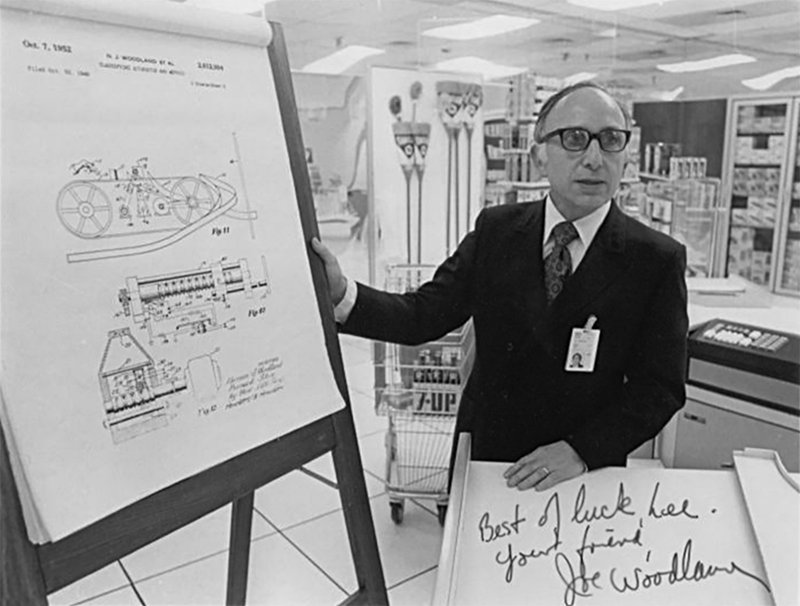When it comes to inventory tracking, you hear a lot about QR codes and barcodes. Both of them hold data about an item that a scanner can read. However, before deciding which one is a winner in the QR code vs Barcode battle, let’s understand each of them separately.

What is a barcode?
A general definition of barcode is a visual and machine-readable representation of information.
It is an image in square or rectangular shape which consists of parallel black lines separated with white spaces of different widths that a scanner can read.
Barcodes are the most popular auto-identification tool for inventory control. Each barcode stores basic information about the product it is placed on.
Traditionally, barcodes were read by barcode scanners. However, now you can even scan a barcode with your smartphone.
Types of barcodes
There are two main types of barcodes: 1D (1-dimensional) and 2D (2-dimensional).
One-dimensional barcodes are simpler barcodes. These represent a series of parallel lines that store product information such as color, size, type, etc. One-dimensional barcodes are located on the top of UPCs (universal product codes), a numerical 12 digit code used for each inventory unit.
Two-dimensional barcodes, on the other hand, are more complex. It includes more product information such as the price, quantity, and image. Because of the complexity of the data stored, linear barcode scanners cannot be used to read two-dimensional barcodes. Smartphones and other image scanners can read those.
Barcode history
The history of the barcode concept goes back to 1948, to Bernard Silver, a graduate student at Drexel Institute of Technology. Silver heard about the need to develop a system that could automatically read stock information at the checkout. Silver and his friend Woodland started working on different systems.
Later, Woodland, who was sure that the plan was workable, left Drexel and continued developing it. He was inspired by the Morse code and formed the first barcode at the beach using sand by making narrow and wide lines. He also developed technology from optical soundtracks to read the code.

Source: Smithsonian Magazine, The History of the Barcode
Benefits of a barcode
The primary goals of barcodes are to increase the speed of sales transactions and organize inventory data. However, there are other benefits that barcodes can provide to businesses.
- Improved data accuracy: Scanning barcodes automates the task of manually entering data into systems. That automation reduces the risk of errors and increases accuracy.
- Instant data availability: Because of the real-time processing and high speed, information about sales volumes or current inventory levels is available on time.
- Simple technique and easy usage: There is no need for complicated employee training to use barcode scanners. It is a straightforward technique to use and practice.
- Increased inventory control: Inventory tracking and calculations are much more accurate when the counts are conducted using barcode scanners.
- Low budget requirements: Installing barcode systems is not only fast and easy, but it is also cost-effective and does not require significant investments.
What is a QR code?
A QR code is a type of matrix barcode.
It represents a square-shaped grid containing a mixture of black and white squares and dots, which hold inventory information and are frequently used in supply chain activities.
Moreover, because many smartphones can easily read QR codes, these codes are also used in marketing and advertising activities.
QR code history
Japanese company Denso Wave, a subsidiary of Toyota, in 1994 is the inventor of the first QR code. The purpose behind the development of the QR code was to improve the production processes of vehicles and parts. So, they developed a modification of a barcode that could encode kana, kanji, and alphanumeric characters.
So, the QR code became the improved version of a barcode with increased functionality, storage, and accuracy. QR codes could store 300 times more data with the same amount of space compared with the 1D barcodes.
Denso Wave keeps working on improvements on their initial design. In 2020, their new QR codes included brand protection, anti-forgery control, and traceability features.
Benefits of a QR code
QR codes developed their way from inventory management to other areas of business operations, such as marketing. Let’s discuss some of the main benefits that QR codes provide.
- Quick and errorless processing of data: QR codes store information, such as website URLs. When a customer scans a QR code instead of typing the URL, the risk of making errors in a process decreases. The customer experience is much faster and effortless with the practice of QR codes.
- Holds more information: A QR code on a product can give significant information to customers. For example, brands can store important product information such as ingredients, usage, environmental effects, etc., in a QR code.
- Actionable: When it comes to marketing and advertising, QR codes are an interactive way of communication with customers. For example, a QR code campaign happened in 2010 in the Central Park of New York. By scanning a QR code, bypassers started a quiz about the park’s history, geology, pop culture, etc.
QR code vs. barcode
There are several differences between QR codes and barcodes.
Amount of information: The most significant difference is the size of data that each can hold. Because traditional barcodes are one-dimensional, they can store comparably less information as opposed to two-dimension QR codes.
Individual identifications: Barcodes that you see on the purchased products are not always unique. So, the inventory cannot be tracked individually. They include some general groupings rather than individual information. When a business wants to store unique information for each stock, they use QR codes.
Speed and easiness of scanning: Speed is vital in any supply chain process. So, it is expected from asset scanning to be very quick. For that purpose, QR code has a winning advantage because it can be read from any direction and is much faster to scan.
Read about supply chain trends of 2021 here.







